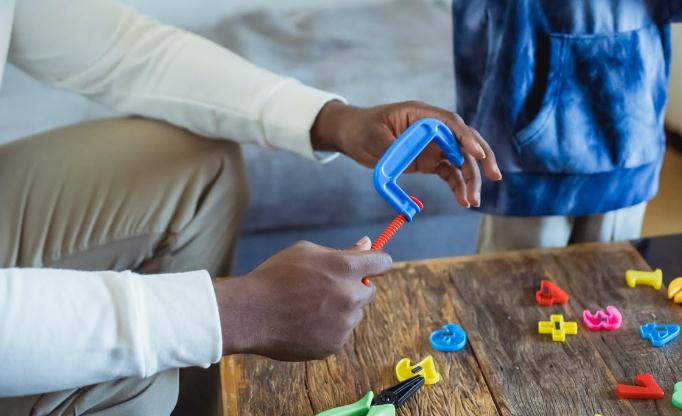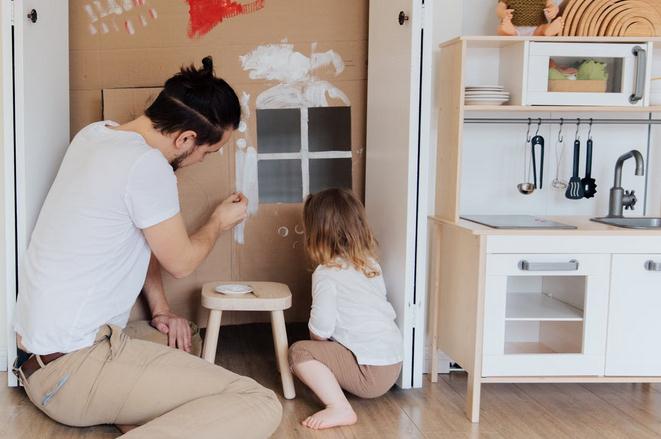A time with dads and kids should be full of fun and learning. As a dad, you should find ways to make your time with your children a fruitful one.
While children love to spend their time in leisure and recreation, dads should make sure that they can balance it by adding time for some excellent learning activities in between.
Kids look at their dads as their source of wisdom, inspiration, and courage. A time with your children doing some Science projects is the best way to instill fun-filled learning.
The crafts and science activities need not be grand or costly. With your creativity and some helpful tips, dads and kids can have a fantastic discovery together. This activity teaches the youngsters to keep learning and never be afraid to try new things, especially when dads are around.
Four easy and playful science activities for dads
1. Buoyancy project
With the use of egg, water, and salt, you can come up with a simple Science experiment to show your kid the greater buoyancy of saltwater by allowing an egg to float on it, as described by Father Mag site.
You have to make a solution comprising one cup salt to five cups of water to do this. Continue to add salt and stir it.
Arrange five transparent glasses in a row. Pour plain water on the first glass. On the second glass, place one part of the salt solution to three parts of water. On the third glass, pour half salt solution and half water. Add one part plain water and three parts solution on the fourth glass. Finally, pour all the salt solution on the fifth glass.
After putting different amounts of salt solution and water into each glass, place an egg (or a hard-boiled egg) inside the glass. Find the glass that allows the egg to float on the water.
Some questions during the experiment:
- In what glass did you find the egg lift off from the glass bottom?
- What is the reason why the egg floats?
- What is the connection between the salt solution to the egg lifting off from the bottom of the glass?
- How can this be applied in a real-life situation?
2. Magnet project
A magnet may look ordinary, but this object can bring lots of fun and learning to the children. A dad can try experimenting with this to show his kids the usefulness of magnets.
In this project, you need a medium size magnet and a paper clip. Place the magnet on the same surface as the paper clip. Let your kid enjoy watching how the magnet pulls the paper clip. Measure the distance where the magnet quickly or slowly pulled the paper clip. You can adjust the distance from time to time and record the differences.
You can also add another type of object between the paper clip and the magnet and observe the difference in how the magnet pulled the object. You can place a piece of wood, paper, plastic, straw, metal, pins, or any other small object you can find at home.
Some questions during the experiment:
- What type of object stops the magnet from pulling it?
- What is the relation between the thickness of the object to the magnet’s pull?
- What type of object was pulled quickly by the magnet?
- What makes the magnet pull the object?
3. Rust project
Rust is a common form of an oxidation reaction. It is when the iron reacts with water and oxygen that leads it to rust.
To show how chemical reactions can happen to objects such as iron or steel, you can explore this project with your kid. This activity is both fun and a learning experience for them.
First, get some dozens of nails. Make sure that the nails are not rust-resistant. Get some jars and fill them with different liquids.
Put some nails inside a jar containing plain water. In another container, put some nails and vegetable oil. Place some nails in another set of jars containing fruit juice, carbonated drink, saltwater, vinegar, and other liquids. Let the kids record their observations daily.
Some questions during the experiment:
- Which liquids made the nails rust quickly?
- Which liquids made the nails rust slowly?
- What made the nails rust?
- How does the air contribute to the rusting of nails?
- What are the other reasons why the nails rust?
- What type of reaction took place during the experiment?
- Do the different liquids help in the rusting of nails?
4. Mold project
This simple experiment will help your kids understand how molds affect bread. To start this project, collect different slices of bread at home or through the help of your neighbors.
Put each slice of bread in a sandwich bag, and label it according to its name, type of flour used, and nutrition label. Next, observe how the mold happened in each slide as the days went by. You can try this experiment by placing the different slices of bread either in dark or well-lighted areas, open-air or in a closet, or a refrigerator or warm room.
Some questions during the experiment:
- What type of bread mold first?
- What are the different preservatives found in each slice of bread?
- Does the type of preservatives help in the presence of mold?
- Do molds occur in bread with seeds?
- What type of area do molds occur fast?
- What type of area do molds occur the most?
Other easy and fun things to do with dad
- Soda Rockets
- Backyard Maze
- Straw Construction
- Homemade Launcher
- Stilts
- Bouncing Bubbles
- Exploding Chalk
- Exploding Soda
- Noisemakers
- Straw Labyrinth
- Coffee Can Camera


